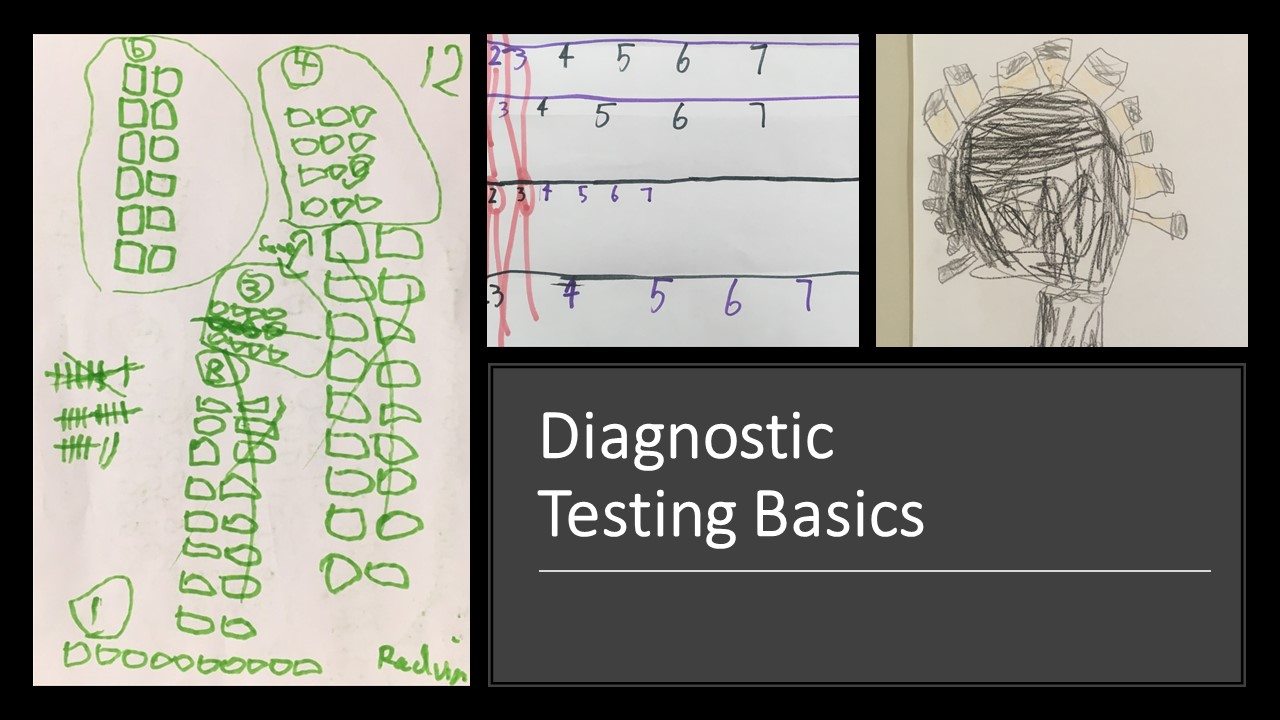
Formative assessment, developmental stages and starting the year well
The goal of formative assessment should always be to find out what each student NEEDS next, rather than focusing

The successfulness of any intervention is largely dependent on matching the strategies selected to the needs of the students and teachers involved.
Your answers to some basic questions below will help you to best select which of the six intervention strategies outlined is most likely to be successful for your school.

* Explanatory note on the teaching approach question:
Whatever teaching approach your teachers are currently using is likely to be already benefiting students to the extent that it can (meaning that more of that approach won’t help). Consider selecting an intervention approach that is of a different style to what your students are already receiving in their main teaching, so that it adds a different kind of benefit. For example, if your teachers are particularly good at using hands-on manipulatives, intervention probably needs a focus on building fluency (efficient strategies to lower cognitive load) as well as building in some retrieval practise. If your teachers are particularly good at explicit-style teaching, then intervention probably needs a focus on addressing underlying misconceptions before further memorisation would be of benefit. If your teachers are good at extension, they may not realise where students get stuck, so intervention would need to include developmental sequencing and tracking to find out where students are stuck with lower-level concepts and make sure that progress is appropriate.
This section outlines six intervention types, divided into small-group and whole-class sections.
Principles: Research on effective small group tuition shows that groups should consist of no more than five students working with a trained adult, through a structured program. An effective dosage is to run sessions 2-3 times per week for 30 minutes, with most benefits achieved in about 10 weeks. The average gain in maths is around 3 months in primary school, however it is lower in high school.
These interventions generally focus on efficient number facts and operations. One example is QuickSmart, which is recommended to be used 3 times per week over 30 weeks.
Students who are at-risk or struggling a little are withdrawn for a period prior to the normal class lesson and given an experience of the content or skills required in the upcoming lesson, so that the cognitive load during the lesson itself is reduced. For example: students might use protractors prior to being required to measure angles in class, or learn strategies for simple subtraction prior to performing more complex subtraction during class. These interventions tend to be the most useful for students who struggle to keep up with the pace of learning in class, but not for those who have major gaps. They require either the class teacher to do the intervention, or very strong communication between the teacher and the person doing the intervention to ensure that the pre-teaching meets the needs of the students.
These interventions use a separate program to diagnose misconceptions or gaps in students’ conceptual understanding and address those concepts specifically. They can be conceptual-change programs (such as using our Interventions in Maths series with stage testing and tracking which is run 2-3 times per week for 8-10 weeks), or hands-on materials focused (such as the EMU program which is run 5 times per week for a year with the inbuilt tracking). Note: our Interventions in Mathematics series showed that the lowest 20% of students across 6 schools made 5 years gain over 2 years on PAT Maths, when used 1-2 times per week for whole-class instruction: download the paper here. The stage testing and tracking is available to website members.
Principles:
Use a diagnostic test to identify areas of weakness. Work through a structured conceptual-change program for 10-12 lessons, starting from the point where around 1/3 of students are stuck. Wait 2 weeks to allow students to forget concepts, then retest. Look for an effect size of at least 0.6. Examples include our Interventions in Mathematics series or our Year 7 Catch Up program (60 lessons, over a year).
These interventions are most effective when done by the normal class teacher, as they can make use of the information in other teaching sessions. They tend to have a high impact on all students, rather than just the ones who are struggling. The approach is particularly good at improving the reasoning skills of top students, so is good for whole classes. Once the intervention has been completed, classes can move to using an experimental/conceptual change lesson at the beginning of each topic for added gains.
Rather than focusing on teaching the most efficient strategies for content, teachers focus on connecting different areas of content using the same flexible strategies. This means that the strategy used to multiply and divide (using an area model) can also be applied for operations with fractions, as well as to algebra and two-event probability. Examples of these strategies as videos can be found in our Essential Maths program for years 11 and 12 as well as on our short content videos page.
When students are not retaining what they have previously learned successfully, it is worth considering implementing Interleaved or Spaced retrieval practices once or twice per fortnight. Interleaved practise is where no two questions in a row can be answered by using the same set of steps (e.g., question 1 might be finding the area, then 2 might be finding the perimeter, then 3 might be finding a side length…). Spaced practise is where a gap is deliberately left for students to “forget” what they have learned, at which point they are required to work it out again or “retrieve” the information. This reorganisation tends to result in the brain prioritising storing that piece of information in a way that is easier to retrieve next time. This is a good strategy for retention of information that a student understands, but is unlikely to help with information that they do not understand.
By taking into account your answers to the questions above, the following advice should help you select which intervention strategy to select for your school.
If your NAPLAN results are much lower than the average, consider a focus on key number concepts (misconceptions) and using conceptual-change approaches for whole classes for a quick catch up, as students probably have misconceptions. NAPLAN testing tends to have misconceptions built into questions, so issues show up there. Make sure that teachers are focused on students retaining maths after Christmas, rather than “getting through” everything, as that is likely to result in very ineffective teaching.
If your PAT Maths growth rate is low in general, but your results are mid-level, then it is likely that students are having issues with retention. Consider introducing retrieval practices once per fortnight to increase the overall growth. You may also want to consider your full year program and make sure that your concepts are linking together, rather than being taught as entirely separate units. Make sure that when teaching multiple approaches, teachers ask students “what is the same about these approaches mathematically?” Focus on the links, rather than the benefits of one over the other. Please note: explicit teaching is best for homogeneous groupings rather than multi-stage classes or classes with a big need for differentiation. Explicit approaches are useful for inexperienced staff or for where there is a high turnover as they are easy to implement. For an alternative that works for these teachers and also for multi-stage classes, consider our full-year AC9 program (read about it at the bottom of this page).
If your higher-level students are not progressing, then it may be that the expertise-reversal effect is occurring due to a focus on explicit teaching. This is where students with higher levels of prior knowledge experience a larger cognitive load when an instructions precedes a problem because (I-PS) they have to integrate the explanation with their existing schema. Starting with a problem, then providing the instruction afterwards (PS-I), tends to result in higher growth for these students. In general, this is a bigger issue with algebra than with arithmetic. From about year 6, the PS-I approach is generally more effective, however the switch occurs earlier for high achieving students, or when a good formative assessment is used for the majority of students (years 2-4). If you can’t make the switch at this stage, consider serious extension.
If your students are having difficulty with transferring to unfamiliar problems (e.g., interpreting NAPLAN), then a combination of (1) teaching more flexible strategies, and (2) exposure to unfamiliar problems is likely to be useful. You may wish to consider subscribing to Back to Front Maths to meet both of these needs.
For more detailed analysis, including targeted recommendations for your school, consider purchasing our Data Analysis Report. This generally takes 2-3 weeks to complete, so please make sure to allow time for us to gather your data.
We also have limited positions for targeted projects for next year. Please email or call our admin team and arrange a time to discuss your school needs with Tierney.

The goal of formative assessment should always be to find out what each student NEEDS next, rather than focusing
Recently I’ve been pondering findings from a major report into Australian schooling that kids who are struggling in maths by
As term 4 is upon us many teachers are struggling with how to get everything done. Realistically, now is the
You may have noticed that kids have a few issues with fractions… but it can be tricky to understand what

The problem: Many teachers that I have met think that modelling means either: “showing kids how to solve a problem”,
Parents often want to help their kids with maths, but aren’t sure how to help. Here are 27 ideas ranging from

KENNEDY PRESS PTY LTD
FOR ALL ENQUIRIES, ORDERS AND TO ARRANGE PD:
© COPYRIGHT 2024 KENNEDY PRESS PTY LTD ALL RIGHTS RESERVED TERMS & CONDITIONS